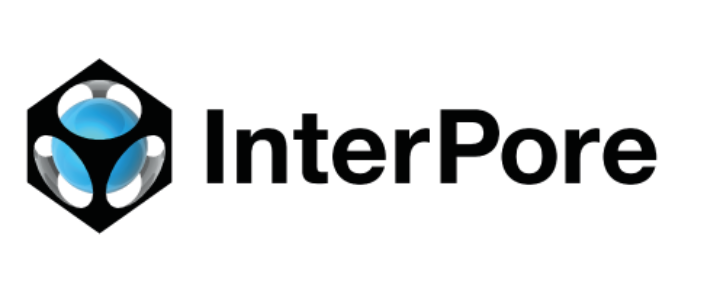We are pleased to announce that Jacques M. Huyghe, professor at the University of Limerick (Ireland) and the Eindhoven University of Technology (The Netherlands), will give the SFB 1313 "Pretty Porous Science Lecture" #23. He is the holder of the InterPore Kimberly-Clark Distinguished Lectureship 2022. His talk will be on "Diffusiophoresis: how ants move elephants".
Date: Friday, 30 September 2022
Time: 2:00 pm CET
Speaker: Prof. Dr. Jacques M. Huyghe
Lecture title: "Diffusiophoresis: how ants move elephants"
Place: Multi Media Lab (MML), U1.003, Pfaffenwaldring 61, 70569 Stuttgart, Campus Vaihingen.
If you are interested in participating in the lecture, please contact melanie.lipp@iws.uni-stuttgart.de
Abstract
Jacques M. Huyghe holds a Master degree in Civil Engineering from Ghent University, Belgium (1979) and a Ph.D. from Eindhoven University of Technology, The Netherlands. Jacques Huyghe has a unique signature in that he has been working at the interface between biomedical and petroleum engineering. He advertised repeatedly the close analogies between biological tissues and geomaterials and the urgent need to exploit these analogies in developing numerical models and industrial/clinical technologies. He authors more than 125 full-size SCI-publications, is the recipient of many awards among which a Royal Dutch Shell donation (1995-1998), a fellowship of the Royal Netherlands Academy of Arts and Sciences (1996-2001) and a swelling materials Interpore Award (2013). He has been cooperating with many industrial partners among which Philips Research, Shell Research and Procter and Gamble. His present interest is in mechanotransduction through voltage gated ion channels in intervertebral disc, swelling and fracture of superabsorbents and poromechanical modelling of coronary blood flow and microvascular flow of red blood cells.
Interactions between surfaces and particles in aqueous suspension are usually limited to distances smaller than 1 μm. However, in a range of studies from different disciplines, repulsion of particles has been observed over distances of up to hundreds of micrometers, in the absence of any additional external fields [1-5]. As the phenomenon is observed in demineralised water, researchers even proposed the existence of a fourth phase of water to explain the repulsion [6]. To identify and isolate these mechanisms, we perform detailed experiments on a well-defined experimental system, using a setup that minimizes the effects of gravity and convection. Our experiments clearly indicate that the observed long-range repulsion is driven by a combination of ion exchange, ion diffusion, and diffusiophoresis [7-8]. Diffusiophoresis is defined as the motion of a particle under the influence of a gradient on concentration of another particle. As the motion is proportional to the gradient of the log of concentration, even the minute concentrations measured in demineralised water can produce the effect. However, the effects studied here could have important implications in biology, for instance in biological chemotaxis, where a migration of cells is observed in response to chemical gradients. Diffusiophoresis could be the nonspecific repellent force creating phagosomes [9] and vacuoles [10] surrounding bacteria [11] or parasites [12-14] attacking or being attacked by living cells. Human physiological research demonstrates that red blood cells race in capillary beds at speeds up to 1 mm/s in capillary tubes that are 30 % more narrow that the red blood cells themselves [15]. A mechanism behind this formidable achievement has recently been proposed: the red blood cells are subject to hybrid propulsion similar to hybrid propulsion of cars. At low velocities, their primary fuel is oxygen gradients; at high velocity their primary source of energy is the pressure generated by the heart. Indeed, the red blood cell faces steep oxygen gradients at capillary entry, generating a slip velocity along the cell membrane, thereby propelling the red blood cell at the cost of the surrounding plasma. The result is a red blood cell speed exceeding the plasma speed by a factor 4 or 5 [16,17].
[1] 1. Green K, Otori T, Direct measurements of membrane unstirred layers. J Physiol 207(1):93–102 (1970).
[2]. Derjaguin BV, Golovanov MV, On long-range forces of repulsion between biologicalcells. Colloids Surf 10:77–84 (1984).
[3]. Zheng JM, Pollack GH, Long-range forces extending from polymer-gel surfaces. Phys Rev E Stat Nonlin Soft Matter Phys 68(3 Pt 1):031408 (2003).
[4]. Chai B, Yoo H, Pollack GH, Effect of radiant energy on near-surface water. J Phys Chem B 113(42):13953–13958 (2009).
[5]. Chai B, Mahtani AG, Pollack GH, Unexpected presence of solute-free zones at metal-water interfaces. Contemp Mater 3(1):1–12 (2012).
[6] Pollack G. The Fourth Phase of Water: Beyond Solid, Liquid, and Vapor. Ebner and Sons Publishers (2013).
[7] Florea D., Musa S., Huyghe J.M., Wyss H.M. Long–range repulsion of colloids driven by ion–exchange and diffusiophoresis. Proc Nat. Acad. Sci. USA,111(18): 6554-6559 (2014).
[8] Musa S., Florea D. , Wyss H.M. and Huyghe J.M., Convection associated with exclusion zone formation in colloidal suspensions, Soft Matter, DOI: 10.1039/C5SM01502B (2015).
[9] Underhill DM, et al. The Toll-like receptor 2 is recruited to macrophage phagosomes and discriminates between pathogens. Nature 401(6755):811–815 (1999).
[10] Stewart JM, et al. Vacuoles and inclusions. Science 133:1011–1012 (1961).
[11] Aachoui Y, et al. Caspase-11 protects against bacteria that escape the vacuole. Science 339(6122):975–978 (2013).
[12] Allen GJ, Muir SR, Sanders D Release of Ca2+ from individual plant vacuoles by both InsP3 and cyclic ADP-ribose. Science 268(5211):735–737 (1995).
[13] Saeij JPJ, et al. ,Toxoplasma co-opts host gene expression by injection of a polymorphic kinase homologue. Nature 445(7125):324–327 (2007).
[14] Boddey JA, et al. An aspartyl protease directs malaria effector proteins to the host cell. Nature 463(7281):627–631 (2010).
[15] J.M. Huyghe, O Shardt, J O’Malley Mechanism inducing longitudinal capillary recruitment, Advances in Experimental Medicine and Biology 1097: 191 (2018)
[16] J.M. Huyghe, On the physics underlying longitudinal capillary recruitment. In “Molecular, Cellular and Tissue Engineering of the Vascular System”, ed. By B.Fu, N. Wright, Springer Verlag, Berlin (2018).
[17] B. Klitzman and B. R. Duling, Microvascular hematocrit and red cell flow in resting and contracting striated muscle. Am. J. Physiol. 237(4) Am. J. Physiol.: Heart Circ. Physiol. 6(4): H481-H490 (1979)
About Jacques M. Huyghe
Jacques Huyghe holds a Master degree in Civil Engineering from Ghent University, Belgium (1979) and a Ph.D. from Eindhoven University of Technology, The Netherlands. Jacques Huyghe has a unique signature in that he has been working at the interface between biomedical and petroleum engineering. He advertised repeatedly the close analogies between biological tissues and geomaterials and the urgent need to exploit these analogies in developing numerical models and industrial/clinical technologies. He authors more than 125 full-size SCI-publications, is the recipient of many awards among which a Royal Dutch Shell donation (1995-1998), a fellowship of the Royal Netherlands Academy of Arts and Sciences (1996-2001) and a swelling materials Interpore Award (2013). He has been cooperating with many industrial partners among which Philips Research, Shell Research and Procter and Gamble. His present interest is in mechanotransduction through voltage gated ion channels in intervertebral disc, swelling and fracture of superabsorbents and poromechanical modelling of coronary blood flow and microvascular flow of red blood cells.




